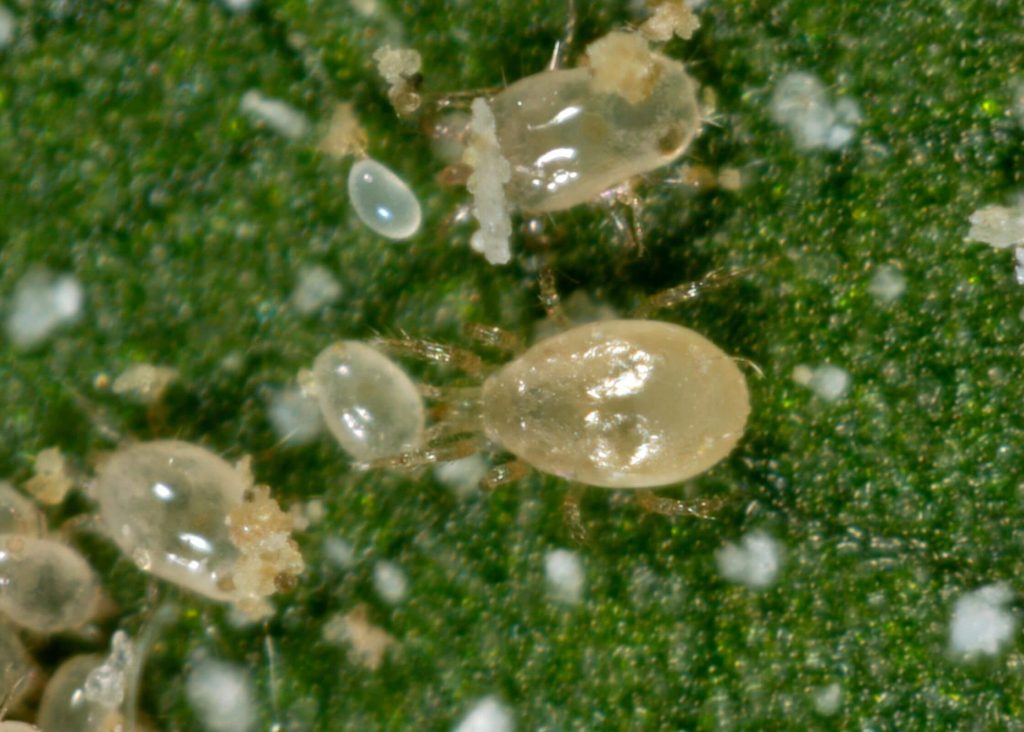
The predatory mite Amblyseius swirskii is one of the most successful commercial natural enemies in covered crops. Commercially, it controls the major greenhouse pests—thrips, whiteflies, and mites—as a generalist predator.
Its success stems from its ease of rearing and the capability to develop and reproduce on non-prey food sources, such as pollen and plant nectar. This allows populations to increase even in the absence of the pest prey. In addition, it can be active continually throughout the production period, if the temperature is above 22 degrees Celsius. It works by simply waiting for its prey to pass by, or actively searching for its prey.
Amblyseius swirskii originates from the Mediterranean region (Italy, Cyprus, Turkey, Greece and Egypt) where it can be found on various crops including citrus and vegetables. Due to its success as a biocontrol agent, it has been released globally with many successes.
It has been particularly used to manage whitefly (Trialeurodes vaporariorum and Bemisia tabaci), thrips (Frankliniella occidentalis), and mites (two-spotted spider mite (Tetranychus urticae)) in greenhouse vegetables. This includes crops like pepper, cucumber, and aubergine, as well as fruits.
Increase the number of individuals applied per square meter to use it as a preventative or curative agent. Simply sprinkle the predator/carrier product manually throughout the greenhouse for application. For more effective distribution of the individuals, use a hand-held air blower.
An example of a successful application of the A. swirskii can be illustrated with a case study from Spain, where it has been used to control pests in honey melon and also in aubergine production in Spain.
To see the predator in action against whitefly, go to https://youtu.be/ebatptL6m-E.
